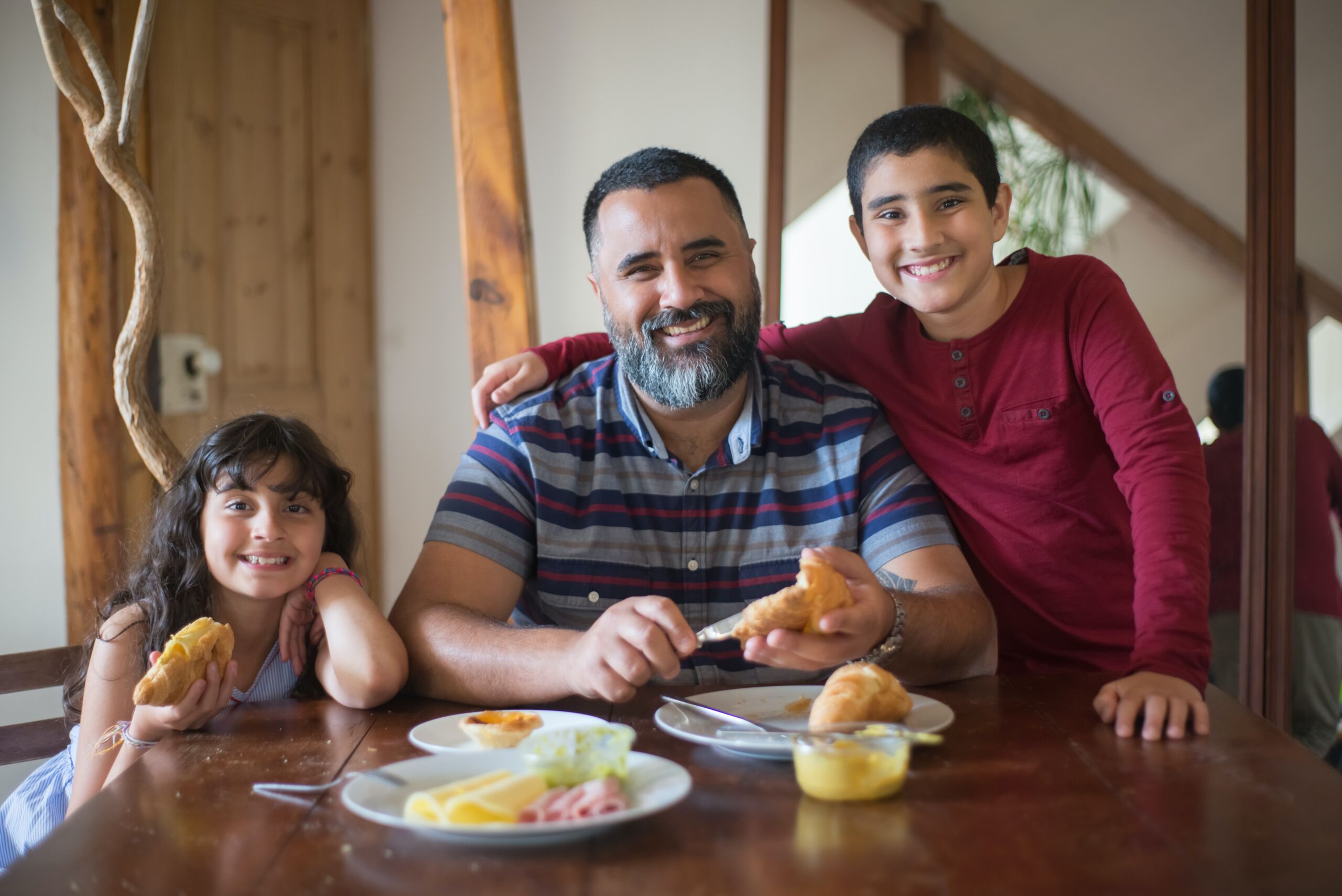
FH Summary: This post explores the concept of psychological distance and its potential to foster personal growth and resilience in children. Psychological distance encompasses dimensions such as spatial, temporal, hypothetical, and social, and plays a crucial role in shaping a child’s cognition and behavior. The post emphasizes the significance of psychological distance in child development, and provides a three-step process for parents to embed it in early development, including the power of storytelling, fostering perspective-taking, and modeling self-reflection. It highlights the transformative effects of psychological distance, promoting empathy, perspective, and decision-making skills in children, and encourages parents to invest in their child’s future by nurturing this concept.
Parenting is like being a navigator on an uncharted sea. The horizon is full of possibilities, but the waters can sometimes be murky, deep, and treacherous. As parents, our greatest endeavor is to guide our children to calmer seas and brighter horizons. One beacon that promises to light the way is a unique concept called “psychological distance.” As we think about it at First Habits, the idea of psychological distance, when embedded in early parenting practices, can set the course for an upward spiral of personal growth and resilience in our children.
This enlightening journey we’re about to embark on will hopefully redefine your parenting experience, equipping you with research-backed techniques that go beyond typical, everyday parenting advice. As the famed musician B.B. King eloquently put it, “The beautiful thing about learning is that no one can take it away from you.” Our role as parents is not just to provide the basic necessities, but to empower our children with a toolset they can use throughout life as challenges and other obstacles are thrown their way. Let’s begin this voyage into the ocean of psychological distance.
Decoding Psychological Distance
At the heart of psychological distance lies a cognitive process, a mental bridge between an individual and the object, person, or event they’re trying to perceive or understand. Psychological distance spans across four dimensions – spatial (physical distance), temporal (time), hypothetical (probability), and social (personal experiences and societal roles).
Each dimension holds its own significance in shaping a child’s cognition and behavior. For instance, temporal distance can teach them the value of patience, while spatial distance can help them comprehend the vast world beyond their immediate surroundings. Hypothetical distance introduces them to probabilities, enhancing their decision-making skills, while social distance fosters empathy and acceptance of diversity.
The Significance of Psychological Distance in Child Development
Understanding and employing psychological distance can play a transformational role in a child’s early development. It’s like providing them a lens to look beyond the immediate, to explore what’s over the horizon. It’s a crucial skill that aids in the development of empathy, fosters perspective-taking and enhances self-regulation. It also forms the foundation for understanding the cause and effect relationship, thereby improving decision-making capabilities.
When children are able to “distance” themselves psychologically from immediate reactions, impulses, or events, they can better manage their emotions, leading to improved self-control, superior problem-solving skills and more informed decision-making.
Embedding Psychological Distance in Early Development: A Three-Step Process
Inculcating psychological distance in children can be achieved effectively through the power of language and narratives. Stories, whether they spring from the realm of reality or fantasy, can transport children into different situations, enabling them to encounter diverse feelings and experiences outside their immediate world. This hands-on experience with psychological distance sets the stage for an upward spiral of personal development.
1. Nurturing Through Narratives: The Power of Storytelling and Reading
Consider the case of Ryan, a spirited five-year-old. His world revolved around his treasured superhero figures. However, sharing his toys, especially his superheroes, with his older sister was a continual challenge. His parents, committed readers of the First Habits newsletter, turned to the power of storytelling to navigate this impasse. They crafted tales of “sharing adventures” where superheroes triumphed only by pooling their resources and powers.
Ryan’s idols’ act of sharing resonated with him, and the narrative eased him into embracing sharing as a heroic attribute, which soon reflected in his own behavior. His empathy for his sister and others increased, and he began to share his toys more willingly.
Books can serve a similar purpose. A child’s bookshelf is a treasure trove of journeys that traverse time, space, and the breadth of human emotions, each offering its unique life lessons.
2. Fostering Perspective-taking: Teaching Empathy and Understanding
One of the simplest yet most effective ways to promote psychological distance is to encourage your child to adopt different perspectives. Engage them in discussions that require them to step into another’s shoes. Questions such as, “How do you think your friend felt when…?” or “What would you do if you were in his/her place?” can stimulate this type of non-self-centered thinking. This conversational approach not only improves their communication skills but also enhances their ability to empathize with others. It can also be helpful to think about the importance of these skills when shopping for your child. There are plenty of books, like this one, and toys, like these, that exist for various ages to help as you focus on this important component of child development.
3. Modeling Self-Reflection: Showcasing Practical Applications
The beauty of psychological distance is its practicality, and one of the best ways to teach it is by showcasing it in action. Share your personal experiences, discuss how you manage your emotions or make decisions. By showing your child how you create psychological distance in your life, you make the concept more relatable, thereby promoting its acceptance and application in their lives.
As a parent, you can also use games and play. For example, you can use a game where you print out the names of a wide range of emotions. On a separate group of small scraps of paper, you then add drawings of faces showing those emotions. Ask your child to match the face to the description, learning how people look when they’re feeling a certain way. You will have ample opportunity to talk about your child’s own emotions too. You can even ask your child to portray those emotions themselves. More games and activities can be found here.
Psychological Distance: An Investment in Your Child’s Future
Teaching psychological distance to your children is akin to planting a seed. It requires time, patience, and nurturing, but the fruits of your labor will be plentiful. It can lead to an upward spiral of personal growth and maturity, enabling your child to better understand their world, make informed decisions, and empathize with others. It’s an investment in their future – a gift that keeps on giving.
Following the philosophy of First Habits, “There is no better investment than in the habits that your child develops.” It’s about more than just providing for their immediate needs; it’s about setting them on a path to success, equipping them with skills that will serve them in life. It’s about nurturing their ability to navigate life’s challenges and to foster an upward spiral in their lives.
To delve deeper into how you can instill positive habits in your children and foster their development, visit the First Habits website and sign up for our weekly newsletter. Join us on this exciting journey of discovery, where we empower parents with the knowledge and techniques to guide their children towards positive habit formation.
The role of a parent is as rewarding as it is challenging, but armed with the right knowledge and understanding, we can guide our children towards a brighter future. Let’s set sail on this journey of growth and understanding, and together, let’s create a world of upward spirals.
Looking to get started? Here are some activities that parents can do with their children to help cultivate psychological distance:
- The Future Self Exercise: Have your child imagine their future self (perhaps in a year or five years) and ask them to draw a picture of what they think they might be doing at that time. Discuss the different aspects of their future selves and how their actions today might affect their future selves. This activity helps children understand temporal psychological distance.
- The Space Explorer Exercise: Create an imaginary adventure where your child is a space explorer who’s journeying to different planets. Ask them to describe what they see, feel, and do on each planet. This activity encourages understanding of spatial psychological distance as the child imagines places far away from their immediate environment.
- The Story Roleplay Exercise: Narrate a story where the main character faces a difficult situation. Afterwards, ask your child how they think the character feels and what they would do if they were in the character’s shoes. This exercise promotes social psychological distance by encouraging the child to empathize with others.
- The Probability Game: Play a game that involves chance, like rolling dice or drawing cards from a deck. Discuss the probability of different outcomes before each turn. This activity helps children understand hypothetical psychological distance as they consider various potential outcomes.
- The Time Capsule Exercise: Together with your child, create a time capsule full of items that represent their current interests and daily life. Decide on a future date to open the capsule. This fun activity incorporates both temporal and spatial psychological distance, as the child will think about how they will have changed when the capsule is eventually opened.
These activities, while enjoyable, are also valuable opportunities for children to understand and practice psychological distance. They will not only enhance their cognitive skills but also foster their emotional intelligence, decision-making abilities, and empathy.







